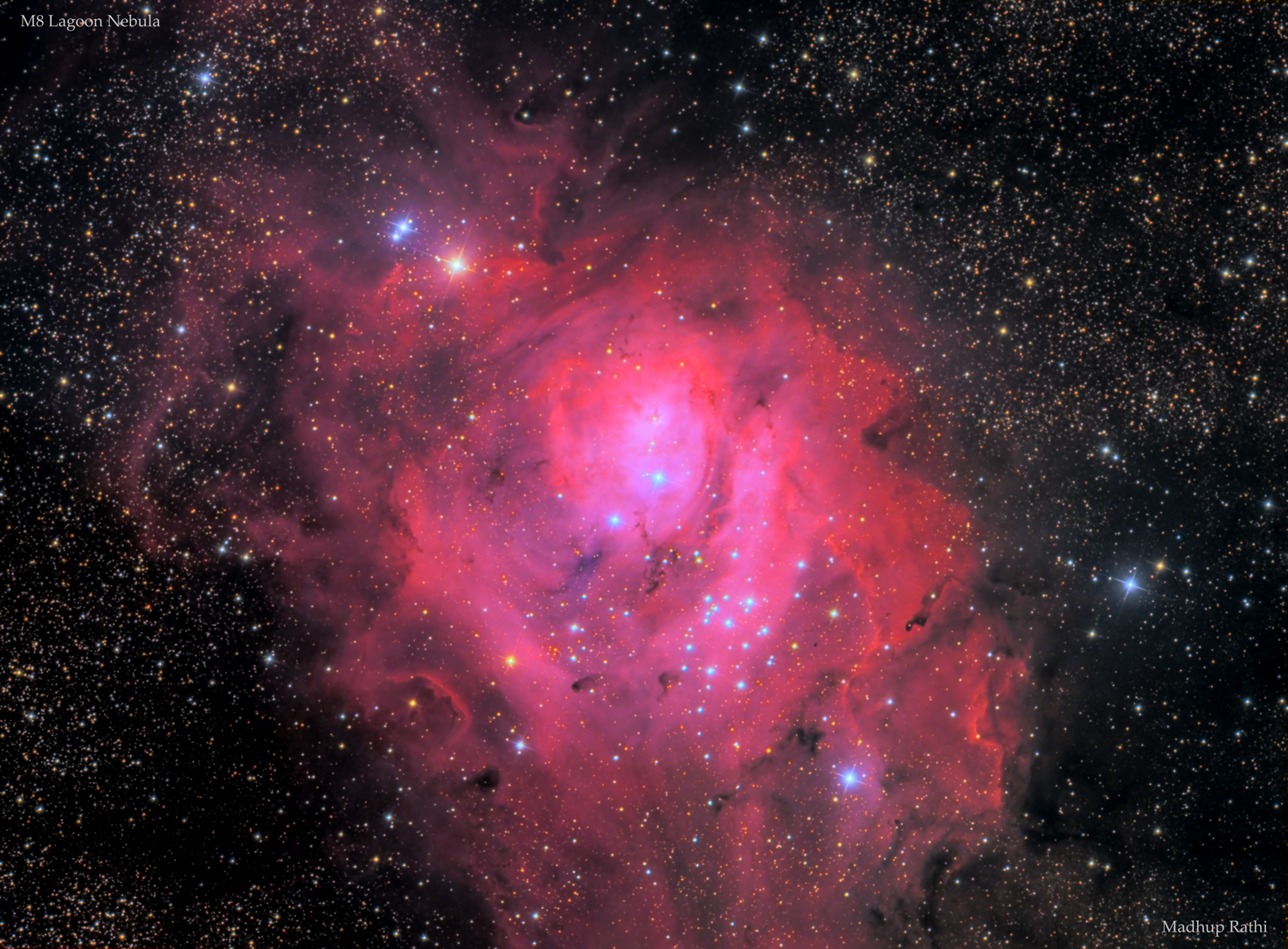Lagoon Nebula is a rather large nebula (especially for my set up) about 4,100 light-years distant, in the direction of the center of our Milky Way Galaxy. Hot stars in the open star cluster (bright blue stars in the center) power the nebular glow by process of ionization, complete with dust clouds that are not ionized (the black/gray structures).
In simple words, when a very hot star’s radiation (light) falls on these super large clouds of hydrogen, they displace the electrons of that hydrogen atoms temporarily, thereby releasing light, that allows us to see these clouds in pink color, as the light emitted by the process of ionization is in the infra-red spectrum.
However, any gas heavier than Hydrogen (such as Oxygen or Nitrogen) is usually too heavy to be tickled by the radiation. And those areas do not light up in most cases. You see them as gray/black areas within the structure.
The structure that you see in the image is about 60 light years tall, and about 75% of the overall nebula.
Composed primarily of hydrogen, much of it ionized (heated or energized) by radiation from the nearby superstar Herschel 36, M8 is known as an emission nebula. As such it also is a star-forming region, sometimes called a “stellar nursery.” Just below the center of the image, there is an open star cluster, NGC 6530, of young, hot, blue stars probably only a few million years old.
Since the object is about 4 full Moon’s size and my camera/telescope set up captures a part of the sky which is about a full Moon’s size as seen from Earth, I needed to take 4 different images of different parts of the nebula and then stitch them together using Mosaic tool available in Maxim DL, an astrophotography software.
I took this image over 10 hours (21 images of 5 minutes each & 5 images of each color of 3 minutes each), at 2.5 hours per panel.
